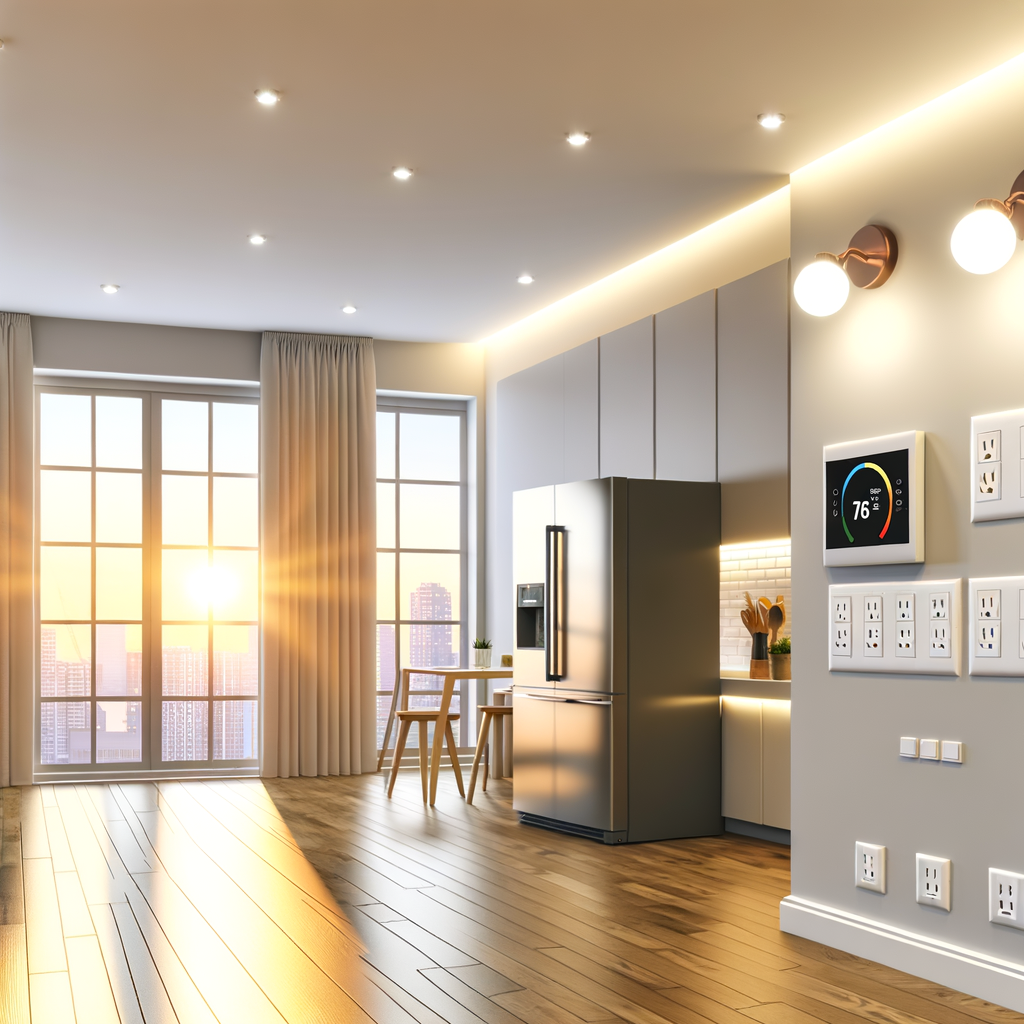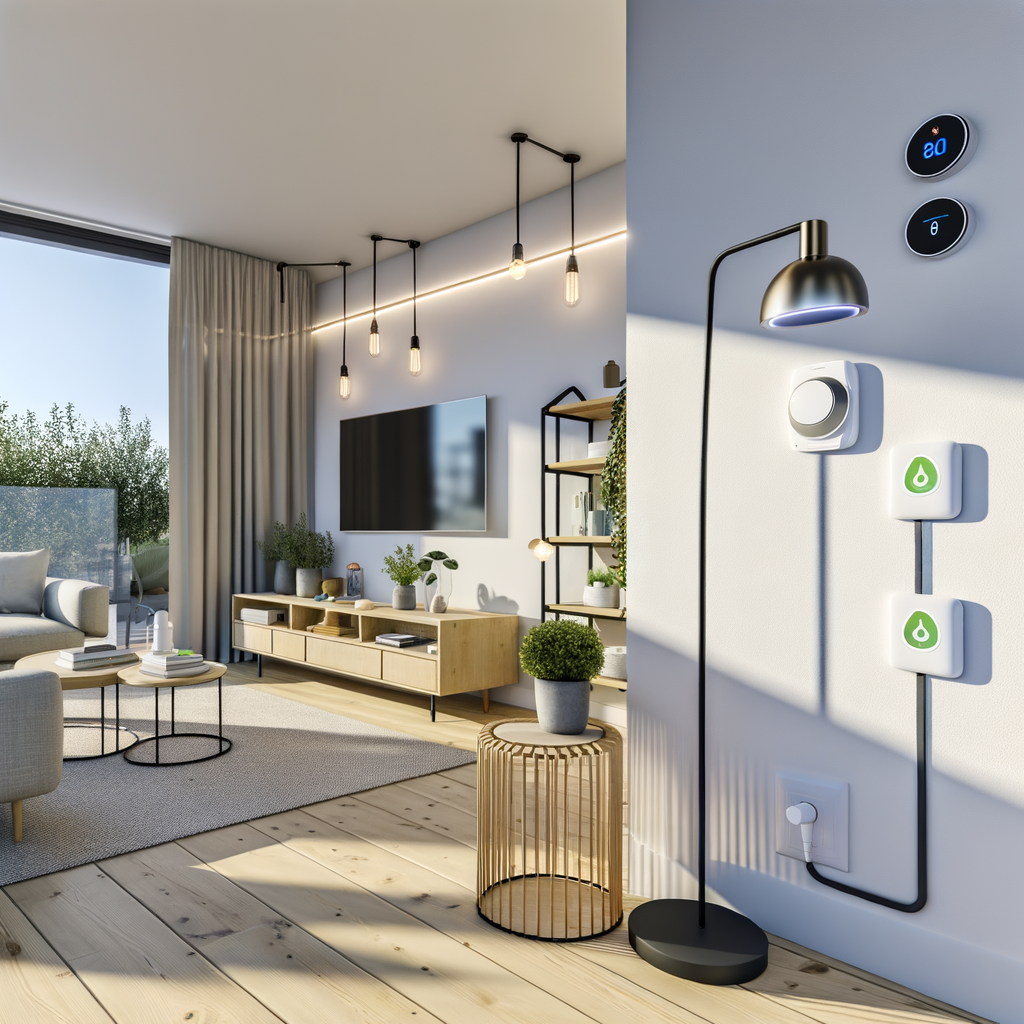Busting 7 Common Myths About Energy Efficiency in Rental Apartments
Energy efficiency is more important than ever—both for the planet and your monthly budget. Yet, for renters, especially those living in apartments, there’s a persistent belief that energy savings are out of reach. Myths abound: “It’s the landlord’s job,” “You can’t make changes,” “Small actions don’t matter”—these misconceptions hold renters back from greener, cheaper living.
Let’s cut through the confusion! In this article, we’ll debunk the seven most common myths about energy efficiency in rental apartments. More importantly, we’ll provide practical, actionable advice you can use—without violating your lease or breaking the bank.
Myth 1: “Renters Can’t Make a Real Difference—It’s All Up to the Landlord”
The Reality: Small Changes Add Up
Yes, landlords are responsible for big-ticket upgrades like windows and insulation. But don’t underestimate the collective power of renters. Even minor changes in your daily habits and a few renter-friendly gadgets can shrink your energy footprint significantly.
- Use LED Bulbs: Replace old, inefficient bulbs with LEDs. They use 75% less energy and last years. Always swap back the landlord’s originals before moving out.
- Seal Air Leaks: Use removable weatherstripping and draft stoppers around windows and doors to cut heat loss.
- Add Heavy Curtains: These act as insulation, reducing both heating and cooling needs.
- Smart Power Strips: These cut off phantom loads (energy wasted by electronics on standby) without unplugging everything manually.
Action Tip: Keep a checklist of small fixes and energy-saving habits. Many—like turning off lights or using a fan instead of AC—cost nothing.
Myth 2: “You Can’t Upgrade Appliances or Fixtures in a Rental”
The Reality: Portable Options and Permission Go a Long Way
It’s true: replacing a fridge or installing new windows usually isn’t allowed in a rental. However, there’s still plenty you can do:
- Ask Your Landlord: Many will upgrade appliances if you request it, especially if you offer to help coordinate or split the cost. Focus on old fridges, old furnaces, or inefficient water heaters.
- Portable Appliances: Use a countertop induction burner, a modern space heater with a thermostat, or a portable dishwasher—all of which use less energy and can move with you later.
- Sink Faucet Aerators and Efficient Showerheads: These low-cost gadgets save water and energy and usually take just minutes to install and uninstall.
- Smart Thermostats for Window AC: Devices like smart plugs or Wi-Fi thermostats can make even dumb window ACs programmable and much more efficient.
Action Tip: Save the original faucets, bulbs, and showerheads so you can swap them back when you move out, ensuring your upgrades are truly temporary.
Myth 3: “Energy Efficiency Isn’t Worth It If You’re Just Renting Short-Term”
The Reality: Efficiency Pays Off, Even in Months
Even if you’re only renting for a year or less, the enhanced comfort, lower bills, and positive environmental impact can be immediate. Many energy-saving products pay for themselves within a few months.
- LED Bulbs: Usually recoup their cost in under a year in energy savings.
- Draft Stoppers and Window Film: Start saving energy (and boosting comfort) on the very first cold night.
- Smart Plugs and Timers: Save you money and offer convenience—plus, you can take them to your next home.
Action Tip: Think of energy-saving purchases as an investment in yourself—not in your landlord’s property.
Myth 4: “You Can’t Control Your Heating and Cooling Enough to Save Energy”
The Reality: You Have More Control Than You Think
Even in older buildings with central heater or AC systems, there are ways to take charge.
- Programmable Thermostats: If you have in-unit control, set the temperature to match your schedule.
- Window or Portable AC Users: Use fans to enhance circulation. Set the AC higher and use fans for comfort at a fraction of the cost.
- Block Sun and Drafts: Use shades, reflective film, or blackout curtains to keep rooms comfortable without extra energy use.
- Space Heaters: Target the rooms you’re using instead of cranky whole-apartment heating.
Action Tip: Don’t forget to close vents or doors to unused rooms for extra savings.
Myth 5: “Renters Have No Control Over Utility Bills”
The Reality: Your Habits Make a Major Impact
Utilities can feel like a fixed expense, but your day-to-day actions influence the bottom line.
- Wash Clothes in Cold Water: Washing in cold uses up to 90% less energy than hot.
- Run Full Loads: Whether dishwasher or laundry, full loads mean fewer cycles and less energy use.
- Turn Off What You Aren’t Using: Lights, fans, and electronics add up fast when left on.
- Shorter Showers: Use a timer and make it a game—not only will you save water, but you’ll save on the energy for heating it.
Action Tip: Review your monthly utility bill and challenge yourself to cut it by 10% through smarter habits.
Myth 6: “Renewable Energy Isn’t an Option for Apartment Dwellers”
The Reality: Community Solar and Green Power Plans Exist
Don’t own a roof? No problem! Today, many cities and power companies offer green power programs you can join from any apartment.
- Community Solar: Buy a share in a local solar farm and have that power credited to your bill, usually with no installation or ownership needed.
- Green Power from Utility: Most providers offer a green power plan where you pay a small premium to buy electricity from wind, solar, or other renewables.
- Offset Your Carbon: If green power isn’t available, consider reputable carbon offset programs as a backup option.
Action Tip: Call your utility or visit their website to see if they have a green option. Switching often takes just minutes online.
Myth 7: “Making My Apartment Energy Efficient Is Too Expensive or Too Much Effort”
The Reality: Many Solutions Are Cheap, Quick, and Move With You
Forget the idea that saving energy requires major remodeling. Most highly effective solutions are surprisingly easy for renters to implement.
- Weatherstripping: $10-20 spent on weatherstripping or draft blockers can save much more in heating costs each winter.
- LED Bulbs: Prices have plummeted in recent years, and the payback is quick.
- Smart Plugs: Control lamps, window ACs, and electronics from your phone—and move them to your next home with zero hassle.
- Thermal Curtain Panels: Add insulation and boost comfort year-round for under $50 per window.
Action Tip: Start small—a few minutes sealing a draft or switching bulbs can translate into year-round savings.
Quick-Start Checklist: Renters’ Best Energy Moves
- Inventory your lights and swap out any incandescents for LEDs.
- Check your faucets and shower for high-flow rates, and install efficiency aerators, if needed.
- Buy a few low-cost draft stoppers for leaky doorways or windows.
- Use curtains wisely: Block sun in summer, open them in winter for warmth.
- Unplug chargers and small appliances when not in use, or use




